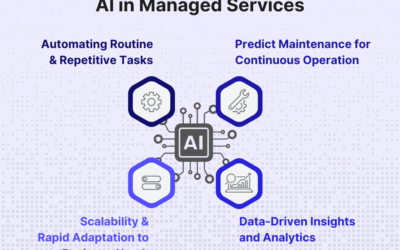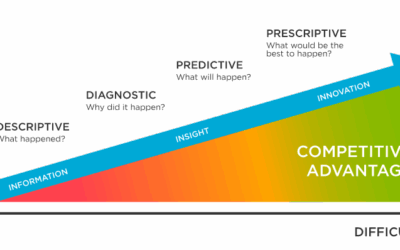New research confirms AI can simulate customer decisions with 90% accuracy. Here’s your step-by-step guide to building a “digital twin” of your ideal customer to pressure-test campaigns before you spend a dime.
What if you could test your new campaign messaging on a panel of your ideal customers in minutes, not weeks? What if you could get detailed, qualitative feedback on why a value prop resonates or falls flat—before you ever hit “publish”?
That future is now here.
A groundbreaking study from PyMC Labs and Colgate-Palmolive revealed that with the right method, Large Language Models (LLMs) like GPT-4o can simulate human purchase intent with 90% accuracy. The key isn’t just asking the AI a question; it’s about how you ask it.
This isn’t just for selling toothpaste. For B2B marketers, this is a paradigm shift. You can now create a “digital twin” of your customer to run synthetic focus groups for everything from website copy and sales emails to entire product launches.
The Breakthrough: Reading Between the Lines
Traditional methods of surveying AI failed because they treated the model like a simple calculator. Asking an LLM, “On a scale of 1-5, how likely are you to buy this?” resulted in bland, neutral, or overly optimistic answers.
The researchers at PyMC Labs fixed this with a technique called Semantic Similarity Rating (SSR). Here’s how it works:
Instead of asking for a number, the AI is prompted to write a short, free-text response to a product concept—just like a human would in a survey.
That response is then compared to a set of five “anchor statements” that range from “Definitely not” to “Definitely yes.” The AI’s answer is scored based on how closely its language and sentiment match these anchors.
For example, if the AI writes:
“This could finally solve our data silo issue between marketing and sales, and the ROI seems clear.”
That response would be semantically very close to a “Definitely yes” anchor.
But if it writes:
“It looks powerful, but the implementation seems daunting and I’m not convinced our team would adopt it.”
That would map closer to a “Probably not.”
By analyzing the meaning and intent behind the words, SSR captures the nuance that a simple 1-5 scale completely misses.
Why This is a Game-Changer for B2B
As a B2B marketer, your biggest challenges are long sales cycles, complex buying committees, and the high cost of getting messaging wrong. This method allows you to:
-
De-risk Your Launches: Test positioning, ad copy, and sales outreach with high-fidelity simulations of your target accounts.
-
Get Instant Qualitative Feedback: Understand why a message works or doesn’t, with detailed reasoning in your customer’s voice.
-
Scale Your Understanding: Create multiple “digital twins” for different buyer personas (e.g., a skeptical CIO, a growth-focused CMO) to see how your messaging plays across the entire buying committee.
How to Build Your Own B2B Digital Twin (Step-by-Step)
Here’s a practical tutorial to build your own AI-powered buyer panel using Claude Projects or ChatGPT.
Step 1: Gather Your Customer Intelligence
You can’t simulate your customer without data about them. Start by aggregating your qualitative customer signals. If you don’t have a robust dataset ready, use AI to generate a realistic synthetic one for this exercise.
We’ll simulate three key data sources:
a. Sales Call Transcripts
Use a prompt to generate 3-5 synthetic sales call transcripts. These should capture the real dialogue, objections, and motivations of your buyers.
Prompt Example:
Act as a B2B sales rep at [Salesforce]. Simulate five sales calls with decision-makers evaluating our [CRM and revenue platform]. Each call should include the buyer’s role, key pain points, goals, and questions about pricing and integration. Output natural dialogue.
b. Public Review Data
Synthesize the voice of your customer from review sites and case studies.
Prompt Example:
Act as a research assistant analyzing user sentiment for Salesforce. Synthesize 25 short, realistic review snippets from platforms like G2 and TrustRadius. Include a mix of positive, neutral, and negative sentiment, and tag them by persona, company size, and theme (e.g., scalability, complexity, power).
c. Internal CRM & Sales Notes
Generate fictional deal notes that capture the core motivations, objections, and reasons deals were won or lost.
Prompt Example:
You are a CRM data generator. Create 20 synthetic Salesforce deal entries. For each, include the account name, contact role, deal stage, key motivations, primary objections, and—if closed-lost—a short note from the rep on why the deal was lost.
Step 2: Distill Core Behavioral Insights
Now, analyze the data from Step 1 to uncover what truly drives your buyers’ decisions. This turns raw data into actionable intelligence.
Prompt Example:
Analyze the provided customer data (sales calls, reviews, CRM notes). Identify the top 5-7 recurring motivations, emotional drivers, objections, and buying triggers. For each insight, summarize “Why It Matters” for our messaging strategy. Output in a table.
Example Output:
| Category | Insight | Why It Matters |
|---|---|---|
| Motivation | Desire for a “single source of truth” across revenue teams. | Messaging must highlight data unification, not just features. |
| Objection | Fear of complex and disruptive implementation. | We need proactive social proof and clear implementation roadmaps. |
Step 3: Create Your “Semantic Anchor” Statements
This is the secret sauce. You’ll translate the insights from Step 2 into a spectrum of how your customer talks, from rejection to enthusiasm.
Prompt Example:
Based on the customer insights provided, create five anchor statements that represent how this buyer would respond to a new product message. The statements should sound like real customer language and reflect their specific emotional drivers and objections.
Example Output for a “VP of Sales”:
-
Definitely Not: “This looks like a massive, expensive project that would distract my team for quarters. The risk far outweighs the reward.”
-
Probably Not: “It’s feature-rich, but it seems more complex than what we need. I’m worried about adoption from my reps.”
-
Unsure: “I see the potential value in the forecasting, but I need to see a clear ROI calculation and how it integrates with our existing tech stack.”
-
Probably Yes: “This could give us the pipeline visibility we’ve been missing. I’d schedule a demo to see if it works as promised.”
-
Definitely Yes: “This is exactly the platform we need to unify our sales process and improve accuracy. I’m ready to get a proposal for the next fiscal year.”
Step 4: Build and Test Your Digital Twin
Bring it all together inside an AI project. This creates a persistent environment where your “twin” lives.
-
In Claude Projects or ChatGPT, create a new project titled “Digital Twin – [Your ICP]” (e.g., “Digital Twin – Enterprise CTO”).
-
Provide the AI with the following system prompt, filled in with your details:
You are a digital twin of [Persona Name], a [Role] at a [Company Type]. You make decisions based on these core insights:
[Paste your Behavioral Insights Table from Step 2 here]When evaluating a new marketing message or product, respond in your own words as this buyer. Then, rate your overall likelihood to act using these five anchors:
[Paste your five Semantic Anchors from Step 3 here]Always explain your reasoning before giving your rating.
Let’s Test It:
I pasted the headline and sub-headline from a major B2B platform’s homepage into my “Digital Twin – VP of Sales” and got this response:
**”Hmm. ‘The #1 AI CRM for your end-to-end customer journey.’ Starting with ‘#1’ feels a bit marketing-fluffy to me—everyone claims they’re the leader. My immediate question is, ‘#1 at what?’
The sub-head is better: ‘Grow your revenue, your team productivity, and customer loyalty.’ You’re hitting on the right outcomes—revenue and productivity are what I’m measured on. But it’s still very high-level. Is this built for a sales leader, or is it a marketing tool that sales is bolted onto? I’m not instantly seeing how it solves my specific daily fires: inaccurate forecasts, rep reluctance to update the CRM, and understanding why deals get stuck.
I’d need to see proof that your AI actually helps my team sell more and doesn’t just generate pretty reports.
Rating: Unsure
The messaging touches on the right goals, but it’s too generic. It doesn’t immediately convince me that it understands and can solve the core operational pains of a sales team. I’d need to click deeper to see evidence specific to sales execution.“
This is gold. In 60 seconds, I received nuanced, qualitative feedback that would typically require a costly and time-consuming focus group.
By building your digital twin, you gain a powerful, on-demand strategist that speaks in your customer’s voice. Start testing your next campaign with it today.




0 Comments